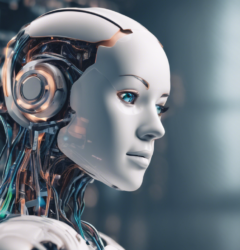
In today’s fast-paced work environment, ensuring workplace safety is paramount, particularly when it comes to managing noise hazards.
With the rise of technology, especially artificial intelligence (AI), organizations now have an unprecedented opportunity to enhance their safety measures.
This article explores the transformative impact of AI-driven noise safety monitoring, shedding light on how it addresses noise hazards, improves employee well-being, and revolutionizes the way companies approach workplace safety.
Transform Your Safety Management with AI-Powered Tools
Key Takeaways
- AI-driven noise safety monitoring helps identify and mitigate workplace noise hazards effectively.
- Understanding noise dangers is crucial for maintaining a safe working environment.
- AI technology provides advanced capabilities for continuous and accurate noise monitoring.
- Successful case studies demonstrate the tangible benefits of implementing AI in workplace safety measures.
- The integration of AI in safety technologies is paving the way for improved employee well-being and future innovations.
Introduction to AI-Driven Noise Safety Monitoring
In recent years, the importance of AI-driven noise safety monitoring has gained significant traction in various industries.
As urban environments continue to expand, the need for effective noise management solutions becomes paramount to ensure public health and compliance with regulatory standards.
AI-driven noise safety monitoring leverages advanced algorithms and machine learning to analyze sound level data, identify noise pollution sources, and provide real-time insights.
This technology not only aids in mitigating the adverse effects of noise on human health and the environment but also assists organizations in maintaining compliance with noise regulations.
With its ability to process enormous amounts of data quickly and accurately, AI-driven monitoring systems empower stakeholders to make informed decisions, implement effective noise control strategies, and foster a healthier, more sustainable urban living experience.
Understanding Noise Hazards in the Workplace
Noise hazards in the workplace are a significant concern, often leading to long-term health issues for employees, such as hearing loss and elevated stress levels.
As organizations recognize the importance of safeguarding their workers, AI-driven noise safety monitoring emerges as a revolutionary solution.
By utilizing advanced algorithms, these systems continuously assess noise levels in real-time, enabling companies to pinpoint hazardous areas and times of excessive noise exposure.
This proactive approach not only ensures compliance with safety regulations but also fosters a healthier work environment, enhancing overall productivity.
Implementing AI-driven noise safety monitoring can help mitigate risks by providing timely data and alerts, empowering organizations to take immediate action and implement effective noise reduction strategies.
‘The greatest danger in times of turbulence is not the turbulence; it is to act with yesterday’s logic.’ – Peter Drucker
Transform Your Safety Management with AI-Powered Tools
How AI Technology Enhances Noise Monitoring
In recent years, the emergence of AI-driven noise safety monitoring has revolutionized the way we manage and mitigate noise pollution in urban environments.
This innovative technology leverages advanced algorithms and machine learning to analyze sound data in real-time, allowing for more effective noise management strategies.
By utilizing AI, organizations can identify noise sources, assess their impact, and develop targeted interventions more efficiently than traditional monitoring methods.
With the ability to process large volumes of auditory data, AI-driven systems enhance the accuracy of noise level assessments, thus ensuring compliance with safety regulations and promoting healthier living conditions.
Furthermore, these intelligent systems can adapt to various environments, learning from historical noise patterns to predict future disturbances, thereby facilitating proactive measures to enhance both community well-being and environmental sustainability.
Case Studies: Successful Implementation of AI in Safety Measures
In recent years, AI-driven noise safety monitoring has emerged as a transformative tool in enhancing workplace safety across various industries.
One notable case study involves a manufacturing plant that experienced high levels of noise pollution, posing risks to employee health and productivity.
By implementing an AI-driven system, the plant was able to continuously monitor noise levels in real time, utilizing advanced algorithms to analyze sound patterns and identify peak exposure times.
As a result, the facility adapted its operational schedules, resulting in a 40% reduction in noise-related incidents and complaints.
Furthermore, the data collected from the AI monitoring system enabled management to make informed decisions regarding soundproofing measures and employee protective equipment, underscoring the pivotal role of AI in creating safer work environments.
This example highlights not only the effectiveness of AI-driven noise safety monitoring in maintaining compliance with regulatory standards but also its potential to foster a culture of safety and well-being among employees.
Benefits of AI-Driven Monitoring for Employee Well-being
In today’s fast-paced work environments, ensuring employee well-being has become increasingly critical.
One notable advancement in this area is AI-driven noise safety monitoring, which offers numerous benefits for organizations seeking to create a healthier workplace.
By utilizing advanced machine learning algorithms, companies can analyze sound levels in real-time, identifying excessive noise that may impact employees’ health and productivity.
This proactive approach not only helps in minimizing stress-related issues but also fosters a more focused and efficient atmosphere.
Additionally, AI-driven noise safety monitoring provides valuable data insights, allowing organizations to develop tailored strategies to mitigate noise pollution.
By prioritizing employee well-being through such technological innovations, businesses can enhance job satisfaction, reduce turnover rates, and cultivate a positive corporate culture, ultimately driving long-term success.
Future Trends in Workplace Safety Technologies
In today’s rapidly evolving work environments, AI-driven noise safety monitoring is emerging as a crucial technology for enhancing workplace safety standards.
As industries become increasingly aware of the risks associated with excessive noise levels—ranging from hearing loss to decreased productivity—organizations are turning to artificial intelligence to provide smarter solutions.
These advanced systems utilize machine learning algorithms to assess and analyze noise patterns in real-time, enabling quick responses to hazardous conditions.
By integrating AI-driven noise safety monitoring tools, businesses can not only comply with occupational safety regulations but also foster a healthier working environment.
Additionally, these technologies offer predictive analytics that can help identify potential noise-related risks before they escalate, exemplifying a proactive rather than reactive approach to workplace safety.
As we look ahead, the incorporation of AI-driven noise safety monitoring is expected to revolutionize how companies manage workplace environments, ultimately promoting safer and more efficient operational practices.
Frequently Asked Questions
What is AI-driven noise safety monitoring?
AI-driven noise safety monitoring refers to the use of artificial intelligence technology to measure, analyze, and manage noise levels in the workplace, ensuring compliance with safety regulations and enhancing employee health and well-being.
How does AI technology enhance noise monitoring in the workplace?
AI technology enhances noise monitoring by providing real-time data analysis, identifying noise hazards, generating alerts for excessive noise exposure, and enabling predictive analytics to improve safety protocols.
What are the benefits of implementing AI-driven noise safety monitoring in workplaces?
The benefits include improved employee well-being, reduced risk of hearing loss, increased compliance with safety regulations, better work environment quality, and the potential for lower insurance costs due to fewer workplace injuries.
Can you provide examples of successful implementation of AI in workplace safety measures?
Yes, several companies have successfully integrated AI-driven noise safety monitoring, resulting in significant reductions in noise-related injuries and enhanced employee satisfaction.
Case studies often highlight industries such as manufacturing and construction.
What are the future trends in workplace safety technologies related to noise monitoring?
Future trends include advancements in machine learning algorithms, integration with wearable technology for real-time exposure tracking, and more robust data analytics capabilities to further enhance safety protocols and workplace environments.





